If you are in the search for a frost-resistant and unpretentious plant that would decorated your site, then pay your attention to the Cyrovenik Syrian. This plant can still be called asklepias, Milky Grax, Latcher. The Motherland of the Cyrynik Syrian is North America, where he was known since ancient times. But why is the word "Syrian" present in the title of the species? We will try to figure it out about this.
Syrian Driver Plant - Botanical Description
- Driver Syrian - a herbaceous plant for an open soil, which belongs to the family of couch.
- Cauccinik Syrian is widespread in North America, South America, Baltic States, in the Caucasus, in Belarus, in Africa. The wildlife is found primarily in the eastern regions of North America.
- Driver Syrian - a perennial plant that can reach a height of 1.5-2 meters.
- Siens Stems Syrian reprehension and thickened.
- Syrian tube leaves can be located on the stems as opposed and in the next order. Have an oblong shape, dark green color and a wavy edge. The tube leaves in length can reach 20 cm, and in width - 12 cm. Also, the leaves are also quite dense and have a central vein. The bottom side of the leaves is slightly lighter due to the edge.
- Flowers of the tube of Syrian pink color, as well as purple or reddish color. In size, the flowers are very small, look like small "stars", collected in beautiful inflorescences and umbrellas at the top of the shoots. Flower petals have an oblong shape with a narrowed top. They reach a length of 3-4 mm.
- The period of active flowering of the Cyruska Syriansky occurs in July and lasts a whole month. Gardeners prefer to grow this variety of drum, as it possesses a unique aroma, which sometimes resembles the smell of chocolate.
- Syrian driving fruit is a box of up to 12 cm long, which resembles a shell. The surface of the seed box is corrugated. As the box ripens are revealed on the sides, the release of the seeds.
- Driving Syrian seeds have a special appearance. Seed itself has a brown color. It also has long silky hairs that resemble cotton wool. Thanks to these hairs, the seeds can easily spread to the wind and even sprout themselves if the autumn is given dry and warm.
- The root system of the Cyrus Syrian has a rod type with numerous horizontal glasses. The division of the bush This perennial does not multiply, since when digging the roots are very easily damaged.
Interesting Fatas about Vatnik Syrian
- Vastechnik Syrian received his second name "Asklepias" in honor of the ancient Greek God Asclepia, who was engaged in the cure of people.
- Despite the fact that North America is called the birthplace of Syriansky, it is called Syrian. Why? This happened due to the fact that the Italian Naturalist Cornut confused the tube with a very similar plant - Kendir, which grew in Syria. Of course, the Vavernik was later attributed to another kind, but the name for him was gaining. In memory of the Italian traveler, the plant is sometimes called Cornuth askletpias.
- It is also interesting for the origin of another Vastechnik's title - a handicraft. In the above-ground parts of the plant in large quantities containing milky juice. According to the ancient beliefs, the swallows smeared their eyes with this juice. They did this in order for them to open their eyes as soon as possible. Thus, this name of the perennial is entrenched in the people.
- Capper Syrian - Honey. Bees love this plant. It is worth considering this fact when landing a perennial in its plot. Honey is obtained unusually fragrant and tasty. Beekeepers note that with 1 hectare you can collect up to 200 kg of honey.
- Syrian's cluster seeds contain a stanfinist - a very valuable and rare substance that is used to treat sharp cardiovascular states.
- Despite the fact that many gardeners strive to grow a Cyrynik's tube on their sites, in some countries this plant is listed in the group of malicious weeds. The perennial is capable of not only to break the weed grass, but also cultural plants. In addition, the agronomists call the Vastechnik "smart weed", as he grows as if he had sowed someone with rows. Agricultural areas may seriously suffer due to a cannon. It quickly and confidently can form whole colonies. Simple removal of the above-ground part of the plant is not enough. Long-term work is required with the use of herbicides for 3-5 years. But in conditions of limited growth in the household plot, this plant does not carry such a threat, playing only a decorative role.
- Young charter stems in some countries eaten even in food. According to taste characteristics, they resemble asparagus.
- The fluff of the tube seed is used to fill the pillows and for other practical purposes.
- In the ancient times, the Syrian Cover Juice was used for the manufacture of rubber. In the Milky Juice of the Plant, which is contained in large numbers in the above-ground parts, contains elastomers. Elastomers were raw materials for rubber. People grown whole cluster plantations. With the arrival of technical progress, the need for this disappeared.
Capper Syrian - useful properties and application
- Capper Syrian is an excellent raw material for the production of coarse rods, fabrics.
- Capper Syrian can be found as a component of some medicines. The plant has not only antimicrobial property, but also anti-inflammatory.
- Driver Syrian Oncewood is used in folk medicine. In most recipes, it is used to treat various skin diseases. Milky Wood Drivenik is fighting well with warts, papillomas, insect bite, heals skin damage, purulent wounds. Folk Lekari are advised to make bandages, compresses, infusions, decoctions, grafs, healing baths. Patient psoriasis you can add milk tubing to the tubing in the bath.
- Milky Juice of the Vastechnik Syrian has a laxative action. But to use it inside with great caution.
- Syrian's cluster seeds also carry useful properties for humans. The extract obtained from them is capable of providing a strong exciting effect on the respiratory center.
- The Cyruska Syrian contains valuables that have a positive effect on the work of the cardiovascular system, and also contribute to the strengthening of immunity and raise the protective forces of the body as a whole.
- Asclepialin is a well-known insecticide, which is contained in some parts of the Syrian vat.
- Capper Syrian - a plant in which essential oils contains in large concentrations. Some perfume companies use the oils of this plant to prepare their products.
- Capper Syrian found application in cosmetology. It can be found as part of various creams, masks, tonic, which are aimed at restoring, rejuvenation and regeneration of the skin.
Capper Syrian. Recipes of traditional medicine
In folk medicine, you can meet recipes using all parts of the Vastechnik Syrian. What kind of healing effects did not promise similar recipes, it is necessary to apply them only after consulting with the attending physician. In some situations, it should be generally refrained from the use of vagatnik folk remedies in the composition. For example, the individual intolerance of this plant, a tendency to the emergence of allergic reactions, children's age, pregnant and lactating women, people with some diseases in the acute phase. Consider some of the recipes with a Vastechnik Syrian as part:
- infusion of Vastechnik Syrian. Add in 1 cup boiling water 1 tsp of dried and crushed leaves of milkweed. Leaves of the plant are harvested in July. The resulting infusion is necessary to let it stand for about 1 hour, then take 1/3 3 times a day. This recipe folk healers recommend to normalize the functioning of the nervous, cardiovascular and urinary systems;
- an aqueous extract of seeds Asclepias syriaca. For the preparation of this extract is necessary to collect seeds, to separate them from the "wool" and grind. In 1 cup of boiling water you need to add 2 tsp crushed seeds and let the solution for 1 hour. The resulting aqueous extract can make lotions, compresses, wiping with a variety of skin diseases;
- the crushed rhizome Asclepias syriaca. To make this recipe you will need a rootstock plant that need to grind to a fine powder. People suffering from urinary retention, it is recommended to take this powder on the tip of a knife up to 4 times a day. In this case, the powder need to drink warm water. This recipe also advised to use at cough, colds, pneumonia;
- alcohol tincture of the rhizome Asclepias syriaca. To prepare this recipe will also need a perennial rootstock. It should be crushed to a fine powder. In 100 ml of alcohol Dissolve 10 g rhizomes. Tincture should stand in a dark place for 14 days. After straining it is ready for use. Apply tincture need to 10 drops 3 times a day. Especially shows a folk prescription for people suffering from arrhythmia, tachycardia, congestive heart failure, shortness of breath and other malformations of the cardiovascular system.
It is strictly prohibited to use any means of traditional medicine with Asclepias syriaca composed of people who suffer from low blood pressure and bradycardia!
Asclepias syriaca. Photo
Despite the fact that many gardeners are afraid to plant Asclepias syriaca on your site, the plant can bring zest to your garden. The main thing to remember when planting perennials, this limitation of space for growth. Milkweed blends well with the following perennials in the garden:
- echinacea;
- perlovnik;
- bell;
- aconite;
- reed;
- yarrow;
- miscanthus;
- perlovnik;
- hair grass;
- meadowsweet et al.
To this perennial does not interfere with its neighbors, it is necessary to plant in pots without a bottom, a tire that digged into the ground to a depth of at least 30 cm. Asclepias syriaca effectively looks in single landings.
Capper Syrian is not too highlighted by its appearance. In group landings it is more often used to fill the space, the scenario of the painting of other ornamental plants. It creates a great effect of filled flower beds. It seems that plants are planted much more than it really is. In single landings, the Vastechnik Syrian can create large and voluminous "spots" in the garden.
Capper Syrian. Landing and care
Capper Syrian - landing
- Choosing a place to land a tubing of Syrian. The reason for the fact that this perennial is not a frequent guest in the garden is its rapid growth and even aggressiveness. That is why it is very important to choose the right place to plant a Vastechnik Syrian. Do not satisfy it near other cultivated plants, as it can easily displace them. New drilling plants can appear at a distance of 1 meter from the maternal bush. It is better to select outdoor lit places, places near unsightly shop buildings that the tuber will decorate perfectly.
- Choosing a soil for planting a tuber of Syrian. The perennial grows absolutely on any kind of soil. Indeed, in natural nature, he is considered a weed that can grow at the roasolines of roads. Of the most preferred soils for a drill, weakly acidic loams can be distinguished. Also, the plant does not like the close fit of the groundwater to the surface of the Earth. If your site does not match this characteristics at all, the decorativeness of the drum will not suffer at all.
- The breeding of the tube of Syrian seeds. This method of gardeners are chosen very rarely. You can buy seeds of the Vastechnik Syrian as in the store, so try to collect yourself. The method is not popular due to the fact that the flowering of a perennial grown in this way comes only after 3 years. Seeds sow on seedlings in April. In the soil they are plugged at 1.5 cm. After the appearance of the sediments of the container is transferred to a cool and bright place. In the spring, when the soil warms out enough, the cutting of the tube is planted into the open ground. Some gardeners successfully practice the planting of the Cyruska Syrian seed in the open soil immediately. Seeds ride around 2-3 weeks and do not require any preparation before landing.
- The breeding of the tubing of the Syrian cuttings. This method is the most popular. In June, a cutlets of about 15 cm made of young vessel shoots are harvested. Landing the cuttings need to be made quickly that the milky juice does not dry. After planting cuttings in a wet soil, the rooting occurs in about 14 days.
- The breeding of the tube of the Syrian division of rhizomes. You can use this method of reproduction as spring and after the end of flowering in the summer. To do this, it is necessary to dig up the rhizome of the perennial and cut it into segments of about 15 cm long. The huge advantage of this method is that the Cyruscan Syrian begins to bloom the next year.
Capper Syrian - Care
- Watering a tuber of Syrian. The plant has excellent resistance to unfavorable environmental conditions. He adequately tolerates not only winter frosts, but also drought. If you forget to pour this perennial, then nothing terrible will not happen to him. He is enough moisture from rain and groundwater. Hydling a drill can be 1 time in 7-10 days. In reinforced watering, plants need after a transplant or immediately after landing.
- Vastechnik Syrian. Like any decorative plant in the garden, this perennial will be gratefully answered any fertilizer. Experienced gardeners advise to feed in 3 stages. The first time the plant fertilize immediately after winter awakening by any mineral fertilizer. The second time, the tuber can be contacted during the tamental of the urea and potassium sulfate. After the end of the flowering period, nitroposk is made.
- Cutting Syrian Prothesia. If you want to achieve the maximum high decorative characteristics of the tubing, then it is advisable to trigger, at least this plant does not like this. Some gardeners remove old shoots in autumn, others - in the spring. It is also possible to trim the blurred inflorescences that will only spoil the appearance of the landing.
- Preparation for winter. Some varieties of the tube are poorly tolerated. The exception is a Cauccian Syrian. It can not be covered and not prepare for winter at all. If you prefer to prepare for winter decorative plants in your garden in general, it does not harm the vapor or shelter.
- Protection of the Vastechnik Syrian. The most terrible pest, which can cause damage to landing, is considered a web tick. For prophylaxis, it is necessary to periodically spray the plant with ordinary water or in the inssence of the onion husk. To prepare such an infusion, you need to put about 100 grams of Luke Helds in 5 liters of water, let's draw the medium of 5 days, and then strain. As for the prevention and to combat a spider tick, ready tools that can be purchased in specialized stores without problems. For example, the union. A vapor treatment pairs to this means will get rid of the plant from adults and from their eggs.
It is also worth mentioning that when performing any work on the care of the Vastechnik Syrian should be careful. Milky juice contained in the above-ground parts of perennial in large quantities, although not poisonous, but can cause allergic reactions to the skin, irritation.
The Vastechnik Syrian and Siberia is growing, and in the Urals. This is another huge plus of this perennial. The tuber will become an excellent basic plant on your site, decorate unsightly and empty areas, and if proper use, can even help help in the treatment of some ailments. In addition, the tube is an otnal honey, which will fill the air with a pleasant aroma, as if from the confectionery shop.

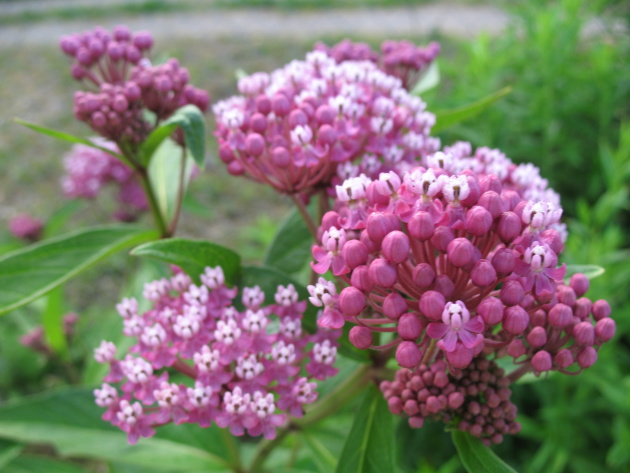
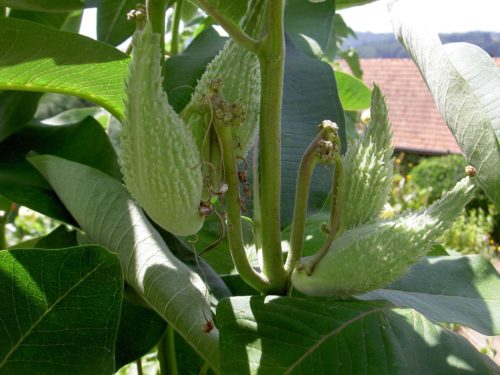
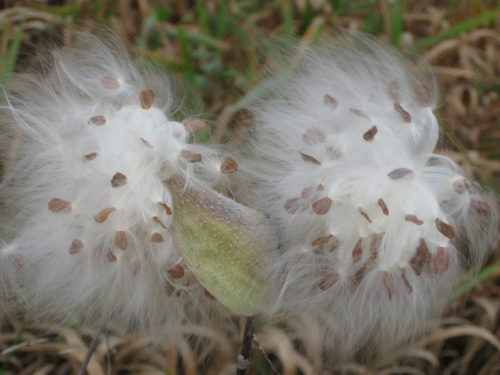
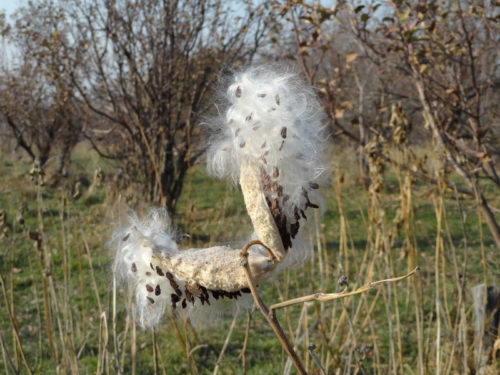
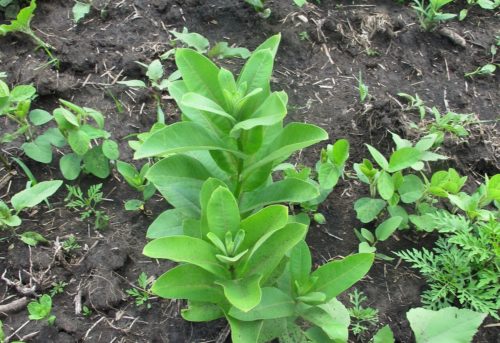
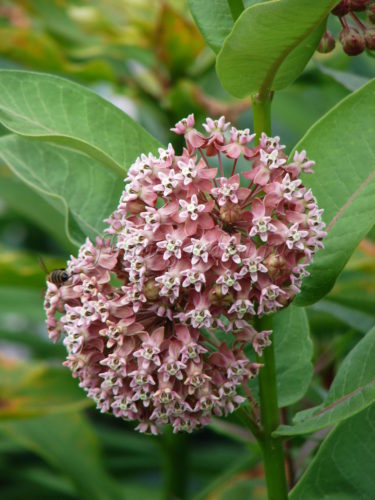


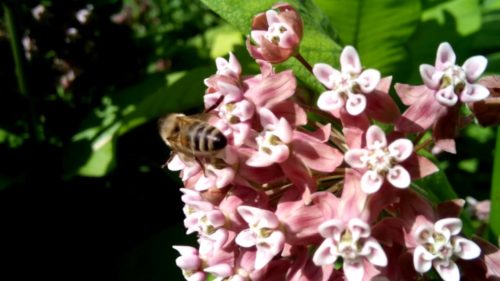
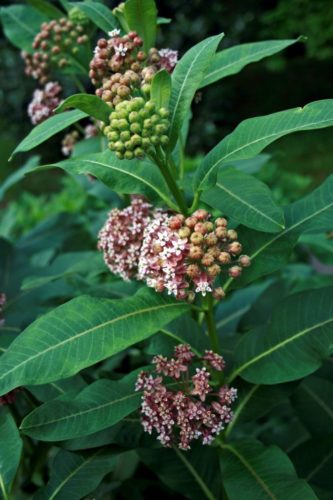












 Start a discussion ...
Start a discussion ...